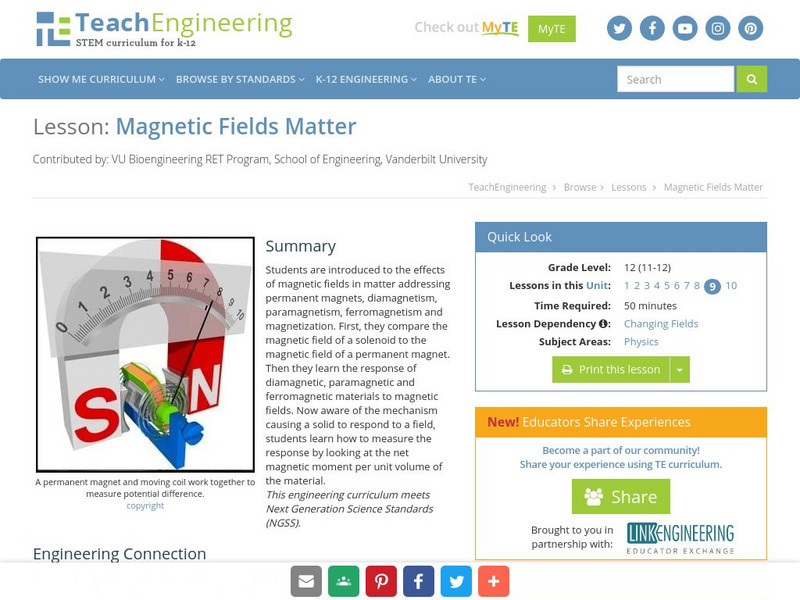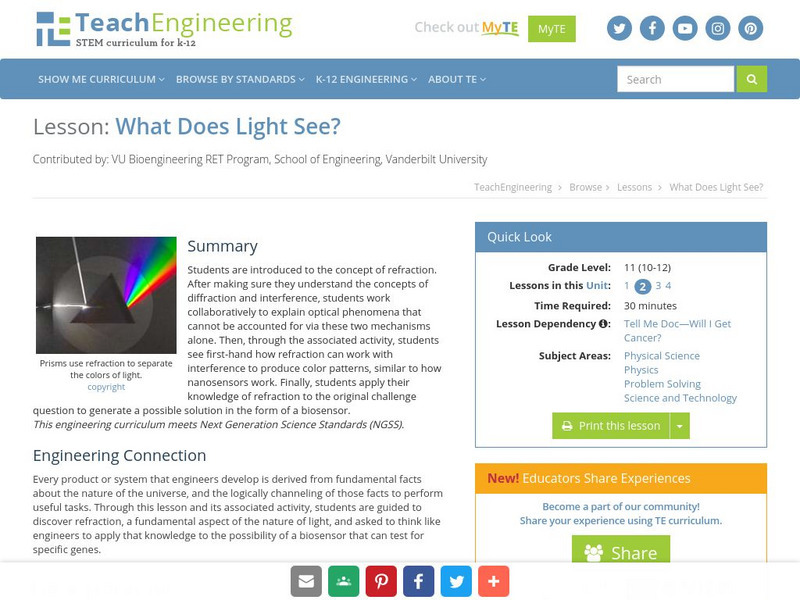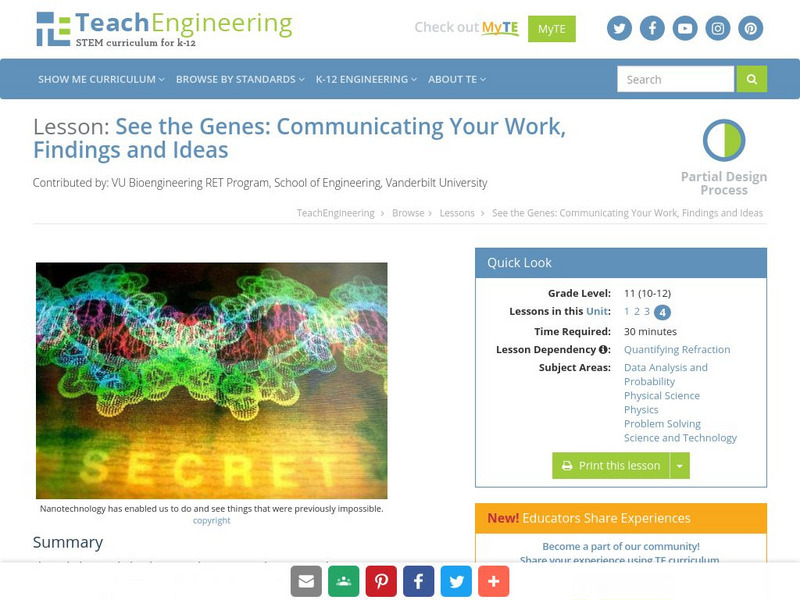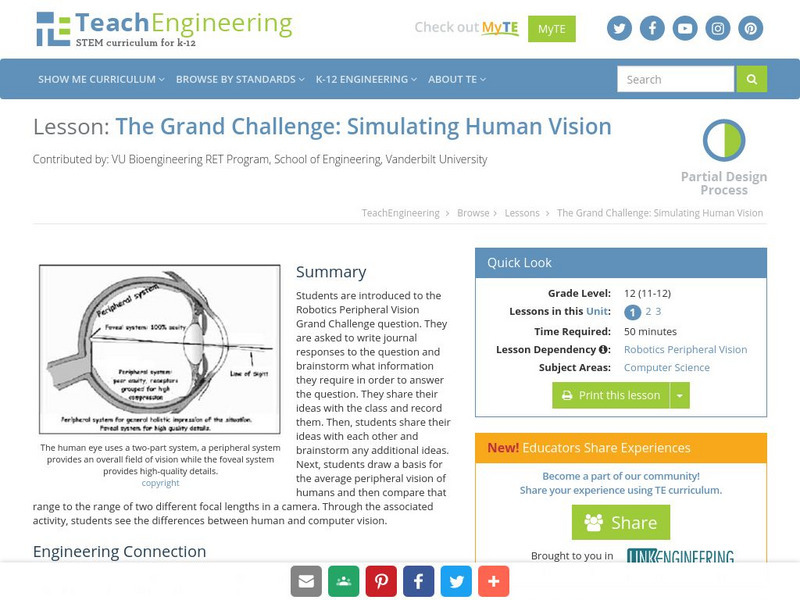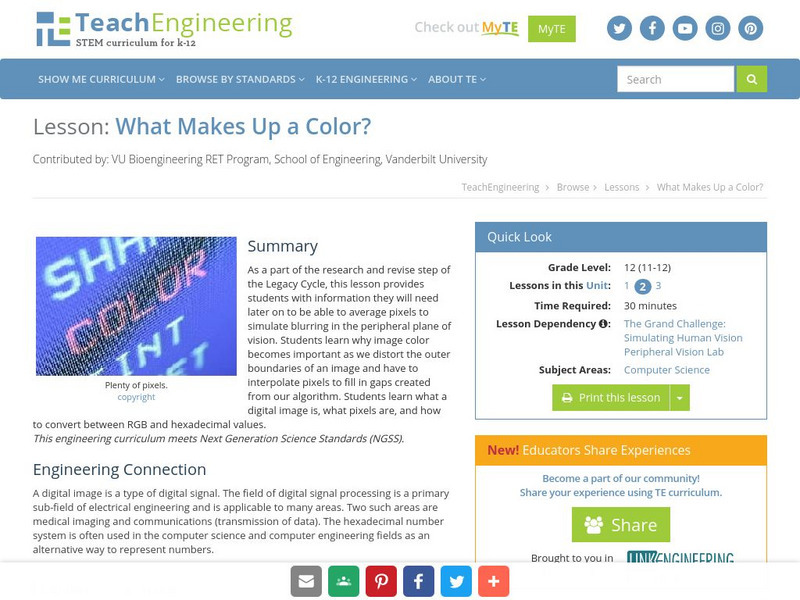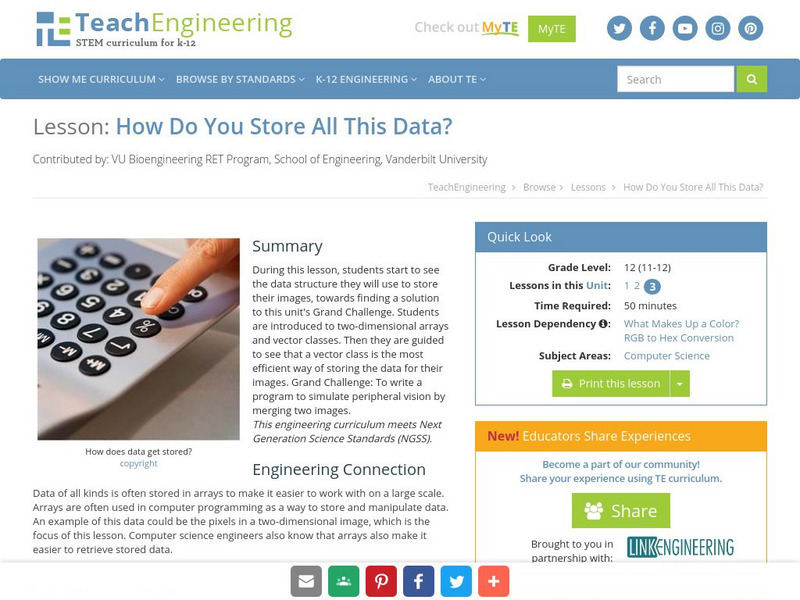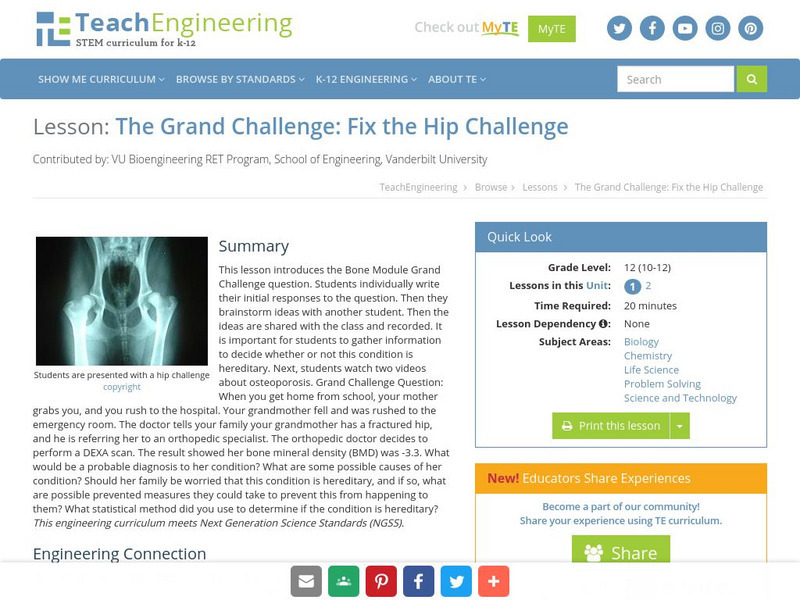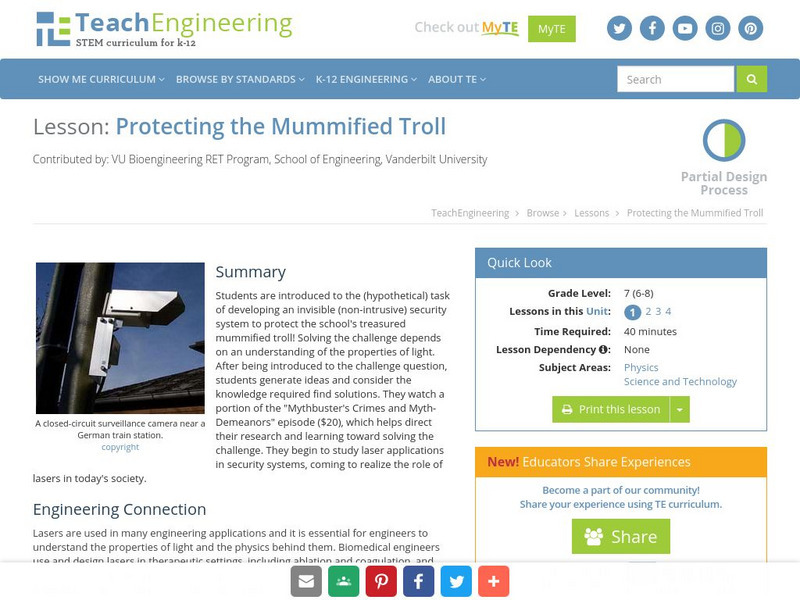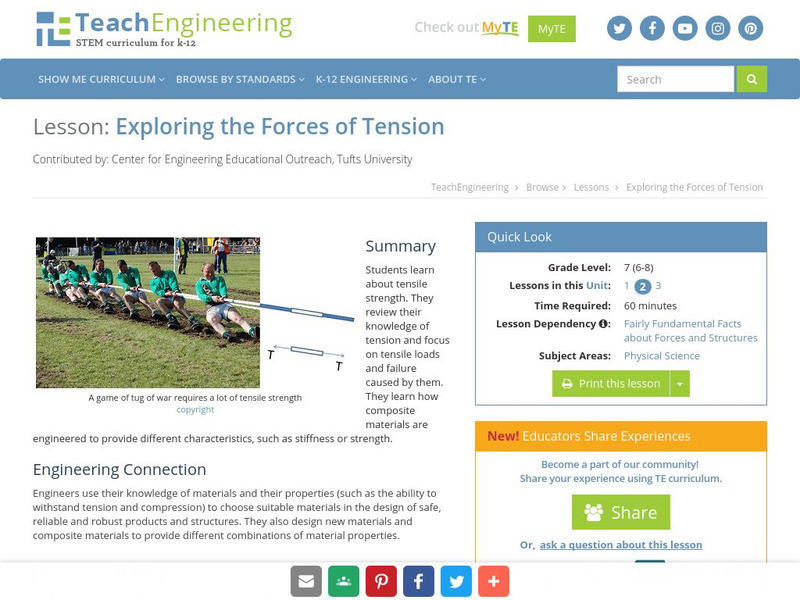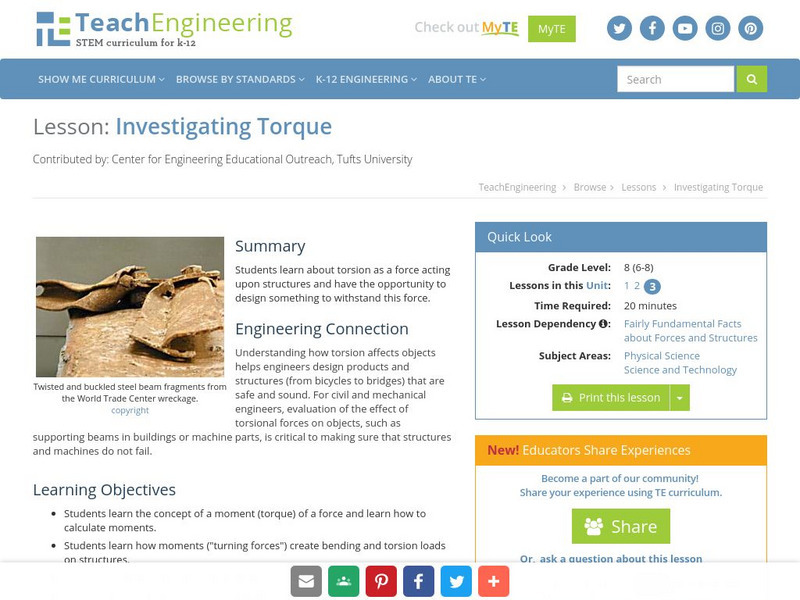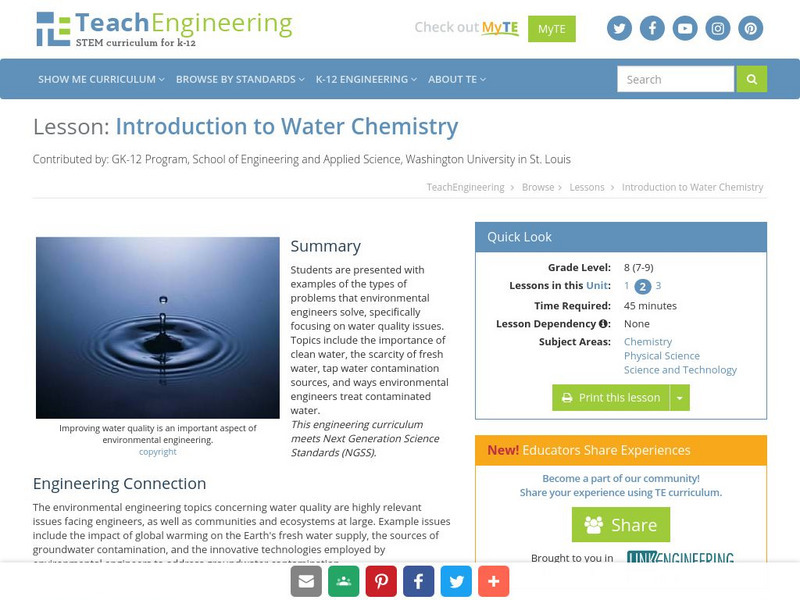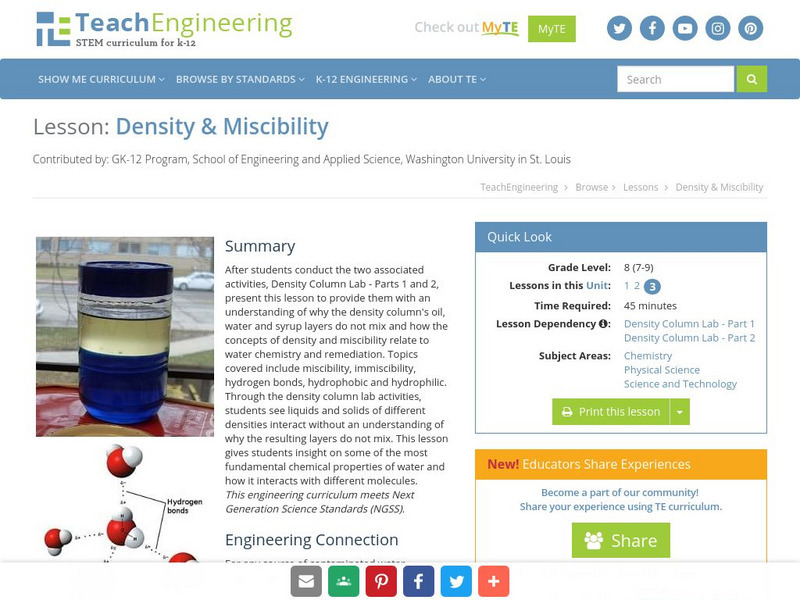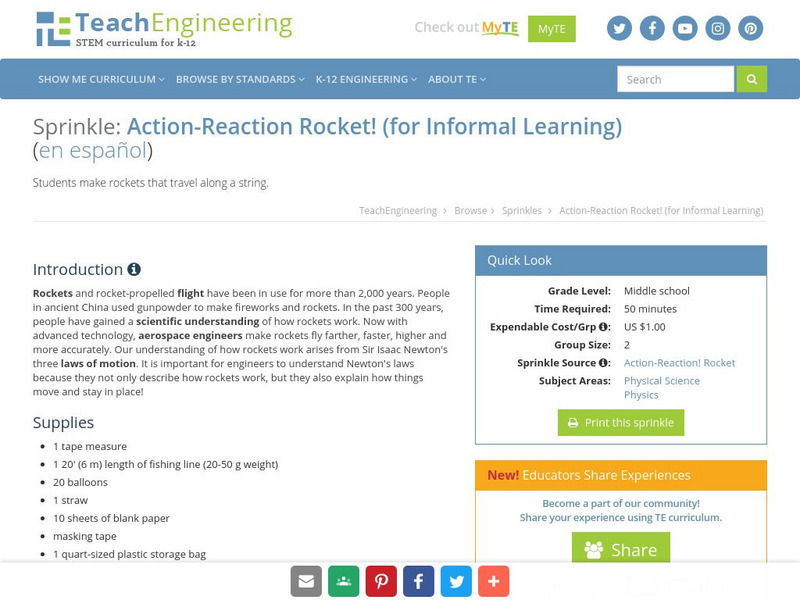TeachEngineering
Teach Engineering: Magnetic Fields Matter
This lesson introduces students to the effects of magnetic fields in matter addressing permanent magnets, diamagnetism, paramagnetism, ferromagnetism, and magnetization. First students must compare the magnetic field of a solenoid to the...
TeachEngineering
Teach Engineering: Tell Me Doc, Will I Get Cancer?
Students are introduced to the challenge called, Tell Me the Odds, discovering a new way to assess a person's risk of breast cancer. Solving this challenge requires knowledge of refraction and the properties of light.
TeachEngineering
Teach Engineering: What Does Light See?
Students are introduced to the concept of refraction. After making sure they understand the concepts of diffraction and interference, students work collaboratively to explain optical phenomena that cannot be accounted for via these two...
TeachEngineering
Teach Engineering: Quantifying Refraction
Learners learn the relevant equations for refraction (index of refraction and Snell's law) and how to use them to predict the behavior of light waves in specified scenarios.
TeachEngineering
Teach Engineering: See the Genes
Through this concluding lesson and its associated activity, students experience one valuable and often overlooked skill of successful scientists and engineers- communicating work and ideas. Students create posters depicting their...
TeachEngineering
Teach Engineering: The Grand Challenge: Simulating Human Vision
Learners are introduced to the Robotics Peripheral Vision Grand Challenge question. They are asked to write journal responses to the question and brainstorm what information they require to answer the question. Their ideas are shared...
TeachEngineering
Teach Engineering: What Makes Up a Color?
As a part of the research and revise step of the Legacy Cycle, this lesson provides students with information they will need later on to be able to average pixels to simulate blurring in the peripheral plane of vision. Students learn why...
TeachEngineering
Teach Engineering: How Do You Store All This Data?
During this lesson, students start to see the data structure they will use to store their images, towards finding a solution to this unit's Grand Challenge. Students are introduced to two-dimensional arrays and vector classes. Then they...
TeachEngineering
Teach Engineering: The Grand Challenge: Fix the Hip Challenge
This instructional activity introduces the Bone Module Grand Challenge question. Students are asked to write their initial responses to the question alone. They will then brainstorm ideas with one other student. Finally, the ideas are...
TeachEngineering
Teach Engineering: Skeletal System Overview
Students will learn about bone structure, bone development and growth, and bone functions. Later, students will apply this understanding to answer the Challenge Question presented in the "Fix the Hip" lesson and use the acquired learning...
TeachEngineering
Teach Engineering: Protecting the Mummified Troll
Students are introduced to the (hypothetical) task of developing an invisible (non-intrusive) security system to protect the school's treasured mummified troll! Solving the challenge depends on an understanding of the properties of...
TeachEngineering
Teach Engineering: Learning Light's Properties
Young scholars learn the basic properties of light--the concepts of light absorption, transmission, reflection and refraction, as well as the behavior of light during interference. Lecture information briefly addresses the...
TeachEngineering
Teach Engineering: Laser Types and Uses
Through two classroom demos, students are introduced to the basic properties of lasers through various mediums. In the Making an Electric Pickle demonstration, students see how cellular tissue is able to conduct electricity, and how this...
TeachEngineering
Teach Engineering: Security System Design
Students apply everything they have learned about light properties and laser technologies to designing, constructing and presenting laser-based security systems that protect the school's mummified troll. In the associated activity,...
TeachEngineering
Teach Engineering: Exploring the Forces of Tension
Students will review their knowledge of tension and focus on tensile loads and failure caused by them.
TeachEngineering
Teach Engineering: Investigating Torque
This lesson focuses on torsion as a force acting upon structures. Students will have the opportunity to design something to withstand this force.
TeachEngineering
Teach Engineering: Introduction to Environmental Engineering
Students are presented with examples of the types of problems that environmental engineers solve, specifically focusing on air and land quality issues. Air quality topics include air pollution sources, results of poor air quality...
TeachEngineering
Teach Engineering: Introduction to Water Chemistry
Students are presented with examples of the types of problems that environmental engineers solve, specifically focusing on water quality issues. Topics include the importance of clean water, the scarcity of fresh water, tap water...
TeachEngineering
Teach Engineering: Density & Miscibility
After young scholars conduct the two associated activities, Density Column Lab - Parts 1 and 2, present this lesson to provide them with an understanding of why the density column's oil, water and syrup layers do not mix and how the...
TeachEngineering
Teach Engineering: Build an Anemometer
Students build an anemometer and use it to explore and calculate wind speed.
TeachEngineering
Teach Engineering: Build an Electromagnet!
Learners build electromagnets and experiment with ways to change their strength.
TeachEngineering
Teach Engineering: Action Reaction Rocket!
Students make a rocket that travels along a string to discover the role that Newton's Laws of Motion play in engineering.
Other
Neef: Greening Stem Toolkit
The National Environmental Education Foundation is greening the STEM program in an effort to attend to the demands of the environmental challenges facing the nation and the world in the 21st Century. Lessons included in this toolkit...
South Carolina Educational Television
Etv: The Hobby Shop: The Rocket
Design your own virtual rocket, and then test launch it. Watch tutorials about Newton's laws of motion and rocket basics to help you improve your rocket's performance.
